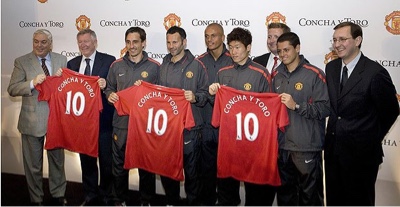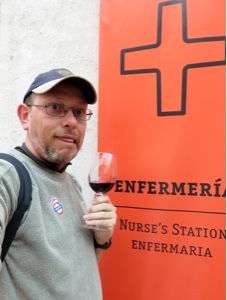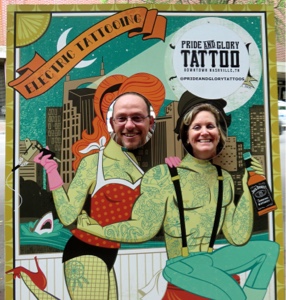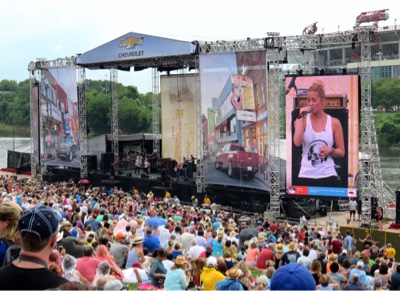The history of Santiago must be one of the most fascinating of any capital city, not to mention it's geography, ecology, politics and culture. For a variety of reasons, I elected to make it my base for 28 days as I desperately tried to re-learn my O-level Spanish, catch up with my travel writing, work out the next steps of my adventure and consolidate my depleted finances. That period of time gave me the chance to thoroughly explore the city and a little of the outlying areas, not something that many tourists to Chile usually manage, as they invariably arrive in Santiago en route to somewhere else and spend a scant few days in the capital itself.
Let me share some of my discoveries.
The Incan Empire stretched throughout the northeast of South America and governed the indigenous populations until the time of the Spanish Conquistadors. Spain then became the dominant force throughout much of South America (hence Spanish being the first language of most countries.) Eventually, as the 'new world' then fought for independence from their colonial rulers beginning with Argentina, Chile became an independent nation.
Santiago itself, founded in 1541 by Pedro de Valdivia, has survived challenge after challenge. Warfare, both from indigenous and Colonial forces, disease, earthquakes, over population, chronic pollution, economic hardship and a military coup have all impacted on a city not yet 500 years old.
Pedro de Valdivia
Architecturally, it is a beautiful mix of European style buildings, a few surviving colonial structures and more modern developments. The city is divided into separate and distinct Barrios, churches are prolific and public parks are extensive. The occasional peak within the city adds to it's beauty. Santiago is now a vast urban sprawl with sharp contrasts between the 'haves' in the affluent eastern suburbs and the 'have-nots' in the poorer suburbs of the south. The population is a staggering 6.7 million and rising (some 40% of Chile's total population) causing huge issues with congestion and pollution exacerbated by the fact that Santiago is located in the country's central valley, 1700 feet above sea level and surrounded by high mountains.
Satellite image of Santiago, Chile taken by Landsat 8 on October 24, 2014
You can see the layer of smog which cloaks the city and is trapped by the mountains
Skyscrapers dominate the urban economic centre, including the highest building in Latin America (the Gran Torre Santiago.) Alongside this rising skyline, Santiago has increasing numbers of shopping centres, several universities and South America's most extensive subway system. The outskirts of the city are abundant with vineyards and it is possible for a person to ski in the Andes mountains in a morning and sunbathe on the coast of the Pacific in the afternoon, though I didn't quite manage that myself.
Geological issues mean that Chile has numerous earthquakes every month. In 2010 the sixth largest earthquake ever recorded hit the city, but improved standards of 'earthquake proof' building meant that whilst 316,000 died in Haiti the same year from a smaller quake, deaths in Santiago were under 1000 people. I felt two quakes during my time in the capital which, whilst alarming for me, were practically unnoticed and quite frankly ignored by the local population.
I have highlighted the two quakes which I felt
I was embarrassingly ignorant of the political events which hit Chile in the 70's (with a far greater death toll than all of Chile's quakes in the last 75 years combined.) For a Chilean, 9/11 is not a date which refers to the attack on the twin towers, but September 11th, 1973. For this was the day that General Augusto Pinochet seized power from the democratically elected Socialist Government of Salvador Allende in a military coup. The presidential palace 'La Moneda' was attacked by troops, Salvador Allende made a final radio broadcast to the nation and then took his own life and a military dictatorship then ruled the country for nearly two decades.
Pinochet's 17 year leadership was brutal and thousands of political prisoners were rounded up, tortured and subsequently 'disappeared'. Since the restoration of a democratically elected leader in 1990, the scars of the dictatorship have been gradually fading, although people say it will be decades before they heal completely. I visited the moving and rather traumatic 'Museo de la Memoria y los Derechos Humanos' to learn more about this period of modern history about which I was largely unfamiliar. It was immensely moving.
La Moneda under siege 11.09.73
Troops round up and detain political prisoners in the national stadium
The Memorial and Human Rights Museum
So, from pre-Columbian civilisations to the spread of Catholicism, from Conquistadors and Colonial Governments to Marxist democracies and military dictatorships - Chile has seen it all. And a youthful Santiago, at just 474 years of age, has seen the most.
I can definitely recommend Santiago to visitors. Yes, it is polluted, particularly in the winter, but the climate is a gentle one, the surrounding landscapes are epic and the variety of visitor attractions, from the changing of the guards to taking the funicular to the top of San Cristobal peak, make it sincerely worth a trip. My Spanish improved dramatically with 21 consecutive day of online lessons and from struggling to make myself understood with locals. I now hope it is strong enough to take me safely through Argentina, Bolivia and Peru in the coming weeks.
Rory and I Sophie
I even had company from Britain for a few days at the start of my time in Santiago and a couple of meals out with Sophie towards the end (the lovely lady I met on my delayed flight over from Atlanta) to augment my time in the city.
Muchas gracias Santiago y adios.






































































































